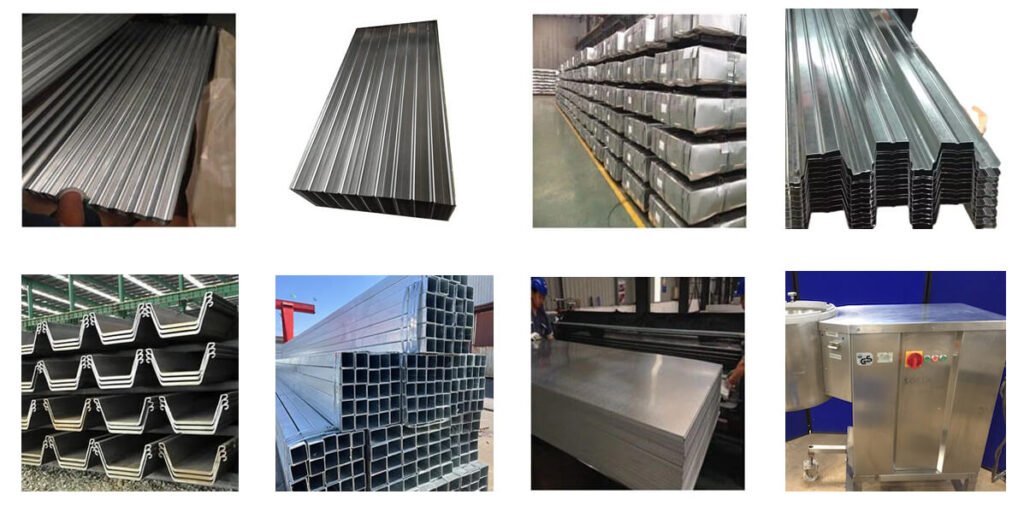Q255 Steel Grades
Medium-Carbon Structural Steel for Enhanced Strength and Versatility
- Technical Support
Q235 Steel Technical Specifications & Applications
Q255 is a medium-carbon steel grade specified under the Chinese standard GB/T 700. It offers higher strength compared to Q235, with a yield strength of 255 MPa and tensile strength ranging from 410 to 550 MPa. This makes Q255 suitable for applications requiring enhanced structural integrity. It maintains good formability and weldability, allowing for easy bending, stamping, and shaping. Q255 is commonly used in construction, automotive, and manufacturing industries for products such as beams, columns, bridges, and structural components. Its moderate carbon content ensures a balance between strength and ductility, making it a reliable choice for various engineering applications.
Table of Contents
1. Typical Uses & Selection Guidance
- Q255 Overview Q255 is a medium-carbon structural steel under the Chinese standard GB/T 700. With a yield strength of 255 MPa and tensile strength of 410–550 MPa, it provides higher strength while maintaining good formability and weldability. Q255 is widely used in construction, automotive, and manufacturing for beams, columns, bridges, and structural components. Its balanced carbon content ensures both strength and ductility.
- Corrosion Protection While not inherently corrosion-resistant, Q255 can be coated with paint, powder, or zinc for long-lasting protection. Galvanized Q255 steel is suitable for outdoor and industrial applications, providing effective resistance to rust and oxidation.
- Forming Advantages Q255 offers excellent bendability and elongation, making it easy to stamp, cut, and shape. It is commonly used for structural beams, chassis components, wire rods, and metal frames. Strict quality standards ensure consistent mechanical performance.
2. Technical Specifications Table
1. Chemical Composition Requirements (Maximum %)
| Steel Grade | Carbon (C) | Manganese (Mn) | Phosphorus (P) | Sulfur (S) | Silicon (Si) |
|---|---|---|---|---|---|
| Q255 | 0.18–0.28% | 0.40–0.70% | ≤0.045% | ≤0.045% | ≤0.30% |
2. Mechanical Property Requirements (Maximum Values)
| Steel Grade | Min. Yield Strength (MPa) | Min. Tensile Strength (MPa) | Min. Elongation (%) Lo=80 mm | Bend Angle (°) | Mandrel Diameter (× Thickness t) |
|---|---|---|---|---|---|
| Q235 | ≥235 | 370–500 | ≥26% | 180° | — |
3. Mechanical Property Requirements (Maximum Values)
| Coating Class | Mandrel Diameter (× Thickness t) |
|---|---|
| Z100, Z200 | 1t |
| Z275, Z350, Z450, AZ150, AZ200, AM100, AM125, AM150, AM175, AM200, AM225 | 2t |
| Z600 | 3t |
4. Applicable Hot-Dip Metallic Coating Types
| Coating Class | Composition (%) | Key Features |
|---|---|---|
| Z (Zinc) | ≥99% Zinc | Basic corrosion protection; suitable for general use. |
| ZA (Zinc-Aluminium) | 95% Zn, 5% Al | Improved corrosion resistance over pure zinc. |
| ZF (Zinc-Iron) | Zinc with iron alloy | Enhanced hardness and wear resistance. |
| ZM (Zinc-Magnesium) | Zn with 2–4% Mg, 5–13% Al | Superior corrosion resistance in harsh environments. |
| AZ (Aluminium-Zinc) | 55% Al, 43.5% Zn, 1.5% Si | Excellent corrosion resistance and heat reflectivity. |
| AM (Aluminium-Magnesium) | Al with Mg alloy | High corrosion resistance; suitable for high-temperature applications. |
3. Q255 vs Q275 Steel — What’s the Difference?
| Property | Q255 Steel Grade | Q275 Steel Grade |
|---|---|---|
| Yield Strength | ≥255 MPa | ≥275 MPa |
| Tensile Strength | 410–550 MPa | 490–630 MPa |
| Elongation (80 mm) | ≥24% | ≥20% |
| Bendability | 180°, standard thickness | 180°, standard thickness |
Q255 Steel FAQ:
Q255 is a medium-carbon structural steel grade under the Chinese standard GB/T 700. It has a minimum yield strength of 255 MPa and tensile strength of 410–550 MPa, offering good weldability, formability, and toughness. Q255 is widely used in construction, automotive, and general manufacturing for structural components.
Q255 steel typically contains:
Carbon (C): 0.18–0.28%
Manganese (Mn): 0.40–0.70%
Silicon (Si): ≤0.30%
Phosphorus (P): ≤0.045%
Sulfur (S): ≤0.050%
This composition ensures a balance between strength, ductility, and toughness, making it suitable for structural applications.
Yield Strength: ≥255 MPa
Tensile Strength: 410–550 MPa
Elongation (80 mm): ≥19–24%
Bendability: 180° at standard thickness
These properties make Q255 ideal for medium-load structural components and general engineering purposes.
Q255 is widely used for:
Structural beams, columns, and frameworks
Chassis and vehicle components
Wire rods, metal frames, and fabrication parts
Its combination of moderate strength and good formability ensures reliability across multiple industries.
Compared to Q235, Q255 provides higher yield and tensile strengths, offering better performance for medium-load structural applications. While Q235 is suitable for general construction, Q255 is preferred when stronger and more durable components are required.







